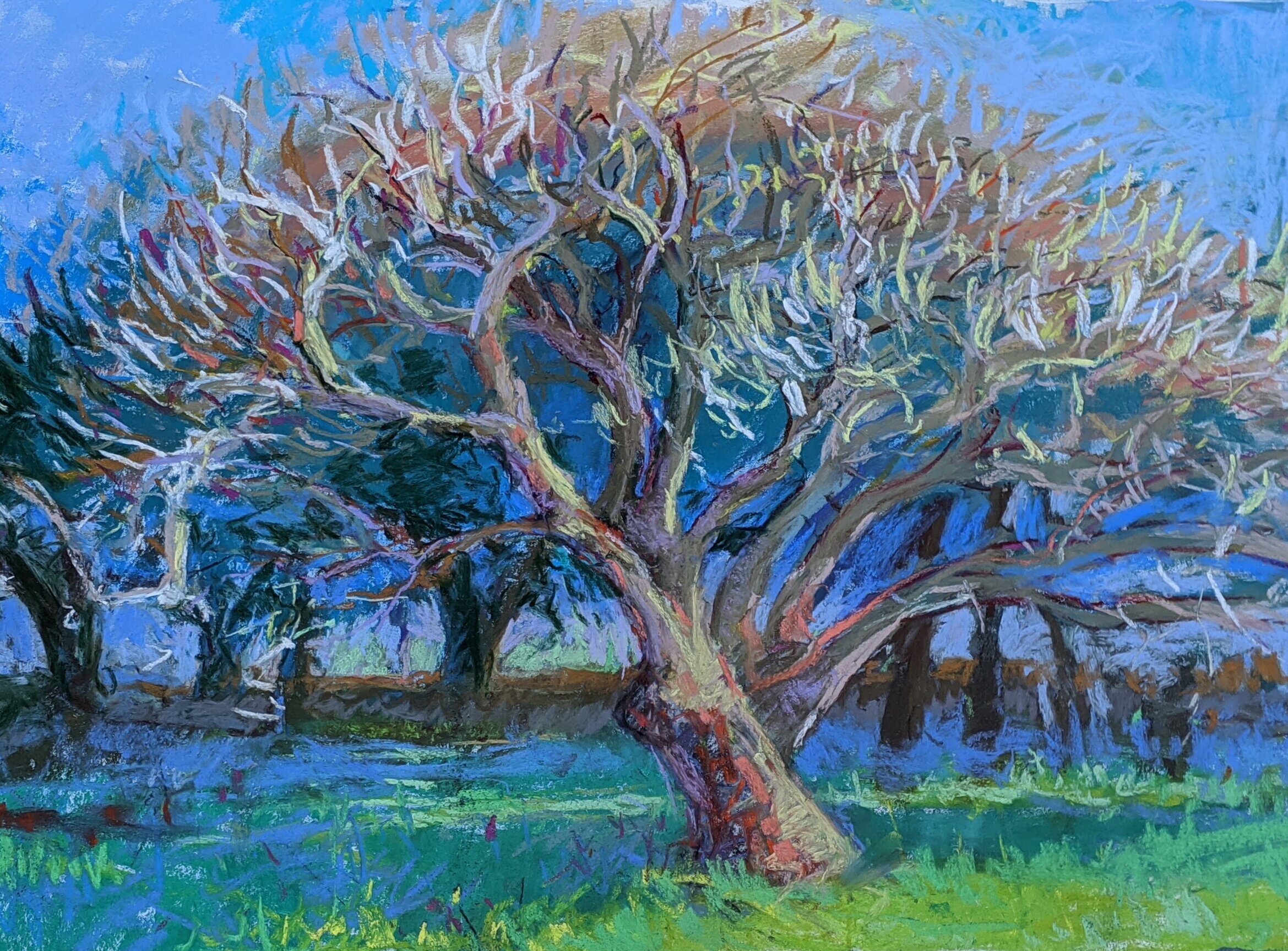Oaks of Palo Alto, Cover Art for Field Guide, Diptych, 8.5 x 5.5 inches each. Framed in two frames. Watercolor and Ink, nfs.
Rooted: Trees in Contemporary Art
Exhibition Dates: January 25—April 5, 2020
Oaks of Palo Alto
I was commissioned to create a guide to the common and cultivar oaks of Palo Alto. The guide is free to visitors at the Art Center. Oaks of Palo Alto was sponsored by Canopy, and members of the Palo Alto Art Center community. For this project, I created 14 original pen and ink sketches of native and cultivar oaks, and made a booklet for publication.
Buckeye Tree, 16 x 20 inches, 20 x 24 inches framed size, pastel. 1400.
Coast Live Oak, 16 x 20 inches, 20 x 24 inches framed size, pastel. sold.
Sierra Aspens, 24 x 12 inches, pastel, sold.
Oak in the Arboretum, 4 x 6 feet, acrylic on three canvases, sold.
More information about the show from the Palo Alto Art Center:
“Trees are sanctuaries. Whoever knows how to speak to them, whoever knows how to listen to them, can learn the truth. They do not preach learning and precepts, they preach, undeterred by particulars, the ancient law of life.”
—Herman Hesse, Bäume. Betrachtungen und Gedichte
Perhaps more than any other elements of the landscape, trees represent nature. Their greenery breaks up the hardscape of our suburban or urban environments, reminding us of the natural world. Trees remain the largest living organisms on earth. They also serve as relics of a prehistoric world, with some trees in California dating to more than 2,500 years ago. For these reasons and more, trees have continued to inspire artists, generating artwork that encourages us to consider the power of trees in our lives and communities.
Our City is named for a tree—El Palo Alto—a 110-foot-tall, 1,100 year old Coastal Redwood. In the 1890s, early tree advocates in our community planted our initial tree canopy. At that time, members of the Palo Alto Women’s Club transported milk cans filled with water in horse-drawn buggies to irrigate these early trees. Today, the City of Palo Alto grows and maintains approximately 36,000 city-owned urban trees. These trees remain a vital part of the Palo Alto landscape.
Trees provide a variety of benefits to people and our larger ecosystem. They trap dust and air pollution, shading harmful solar radiation. Trees absorb carbon dioxide as they grow, reducing the overall concentration of greenhouse gasses in the atmosphere and slowing climate change. They are natural air conditioners, reducing summer temperatures. Trees help people live longer, healthier, and ultimately happier lives averting an estimated $6.8B in health care costs. Research indicates that exposure to trees reduces blood pressure, slowing heart rates and reducing stress.
The Palo Alto Art Center has its own collection of unique and wondrous trees on our property. After seeing the show, we encourage you to pick up a tree map and explore the trees around you.





